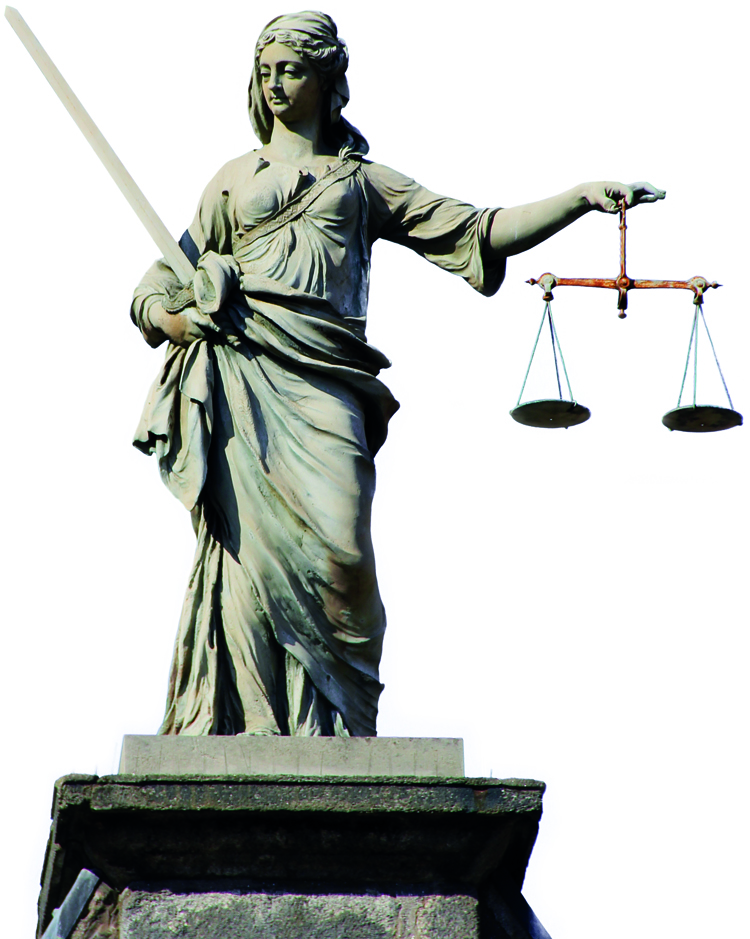The traditional juxtaposition of environmental and common good’s issues stimulates some considerations on a possible systematic approach to the two themes within the general principles of a legal system. This is not an easy process for two reasons.
On the one hand, it is becoming increasingly clear that there is a tendency to define as common good broader and more varied aspects of human activities including, besides the environment, culture, schooling, artistic resources, urban spaces, the web, justice etc. This is a phenomenon in line with the plurality of ways and manifestations of interpersonal relationships, but it runs the risk of relegating the concept of common good to a mere atmospheric and evocative realm, lacking specificity, essentially characterized by vagueness and haziness.
Legal Theory of Common Good
On the other hand, the debate on environmental issues has undergone an evolution of two basic elements regarding matter – the value to preserve (the ecosystem) and the parameter to guarantee such conservation (the so-called sustainable development) – into two concepts, that of “natural capital” and that of “circular economy,” widely debated in the scientific-economic world, but still marginal topics in legal discussions.
The former identifies Earth’s natural goods (soil, air, flora and fauna) and their relative ecosystems’ services, as an essential value for human life, to be preserved and guaranteed both from a qualitative and quantitative point of view.
In turn, the “circular economy” refers to an alternative economic model to that inherited from the Industrial Revolution based on “take, produce and throw away.” The basic idea underpinning such system – natural resources are always available cheaply and easily disposed of – is about to enter troubled waters and we hope for a transition to a system whose products keep their added value as long as possible, while waste is reduced to a minimum and, in any case, reused and recovered.
These two concepts represent the two sides of the same coin.
Not only does the prominent position attributed to environmental issues highlight the importance of environmental pollution but above all that of the indiscriminate exploitation of natural resources and aims to give a monetary value to the services they offer that must be taken into account in management and protection laws, both for private and public sectors.
The transition toward the circular economy aims to promote the achievement of such a result, through “changes in value chains, from product’s designing to market and business models, from waste-into-resource transformation models to modes of consumption” (Communication “COM/2014/0398” from the Commission to the European Parliament, to Council, Economic and Social Committee and to the Regions’ Committee, “Towards a Circular Economy: A Zero Waste Programme for Europe”).
After identifying the two concepts on which the environmental debate has been remoulded, in order to contextualize them in the common good legal theory, we must begin with a general observation.
The status of “common,” in all its various aspects, is in any case always attributed to a good, a context or a service to highlight its peculiar value for a fundamental aspect of human existence (for example, health, information, participation).
In this way, a concept of relation is established, since this status depends on the relationship with the individual, or more precisely, with one of the several aspects of its personality recognised as a fundamental right.
Since it is a fundamental and not a particular right, it belongs to all humans. In other words, it is an essential characteristic of all individuals as ruled by advanced democracies’ Constitutions and by international charters of fundamental rights. Since it is a “common” asset of all those involved, so are the goods enabling its fulfilment.
This bilateral fulfilment good/individual, essentially of values and ethical nature, must be impregnated with content since only with specific rules and regulations it can become effective and acquire significance within the legal system.
Thus, the concept of “common good” acquires full legal value through to a two-step scheme.
The first aims to provide an act of acknowledgment of the relationship between a good or service and the fundamental right and a justification function of exercising the right in a context recognised as common good, as well as conferring possible special faculties intrinsic to it.
This first step only focusses on the relation common good/fundamental right and aims to identify the legal basis to back it. Therefore, it does not include detailed descriptions and the definition of further relationships, aspects that instead belong to a second, but equally essential, system’s level.
In fact, for a certain context to have legal importance as common good, it is not enough to connect fundamental rights to goods and services necessary for their full enjoyment and to justify, based on this connection, the rightsholder’s exercise. This relation must be regulated and/or protected by specific rules and the activity of other interested actors must be regulated, besides the fundamental right holder, as subjects contributing to the fulfilment or protection of the very goods, or those who can jeopardise them or compromise their collective fruition in any way.
 |
|
John van Nost the Younger, The Justice, Dublin. Photo by J. H. Janßen
|
Why Natural Capital is a Common Good
Based on these considerations, it can be said that “natural capital” is a legal common good. As a matter of fact, the following characteristics can be identified:
1. a direct relation between the fundamental right belonging to each member (to environmental salubrity and landscape conservation) and natural resources that jointly make up the natural capital;
2. the deriving justification to exercise the right (i.e.: the action to get compensation for damages due an environmental pollution incident, or to get an injunction against activities harmful to human health);
3. attribution of special powers connected with the right itself (attributions – concisely expressed by “environmental democracy” – regarding access to information, public participation to decision-making processes and to justice in environmental matters, as recognized by the Aarhus Convention and ensuing national implementation measures such as Law n. 108/2001 in Italy);
4. structured sector rules and regulations aiming to give effect to and protect that relation and regulate the activity of all those involved (private and public).
Confirmation that natural capital is a legal common good stems also from another consideration.
Common good legal theory also recognizes the novelty of such concept, compared to the traditional regulatory system of goods classification, based on the concept of ownership and the ensuing dichotomy between public and private, since it is a notion that disregard ownership because its fundamental characteristic is the collective and “metaindividual” function of the good, regardless of the proprietary system.
This approach to natural capital has already been anticipated both by lawmakers, in special sectors such as public use (having deep roots in the history of feud and collective property) and legal system when it came to resolve the doubt about the ownership of public use of goods such as fishing valleys in the Venice lagoon – in this case, Civil Court of Cassation with “United Sections” (extended panel of nine judges) n. 3665/2011, according to which “from the direct implementation of articles 2, 9 and 42 of the Italian Constitution, we can derive the principle of protection of human legal status and its correct application in a welfare state, also in relation to the environment, with specific reference not only to goods that, according to the legal-code classification, are state property or state-owned assets, but goods that, regardless from a previous identification by lawmakers, thanks to their intrinsic nature or purpose, are, based on an interpretation of the whole regulatory system, functional to the pursuit and fulfilment of collective interests and that, for their use to the realization of the welfare state, must be considered common, regardless of title of ownership, thus the status of state property becomes secondary to the function of the good with regard to collective interests.”
Environment: Balanced and Integral Protection
A mature legal theory of natural capital as common good requires a further step forward.
As a matter of fact, we must ascertain whether within this organic notion it is necessary or useful to carry out further classifications owing to the plurality of resources ascribable to the concept of natural capital and their ecosystem services.
The necessary solution seems modulation. In fact, from the point of view from which the issue is examined, we can come up with diversified classifications (for example, as is the case with using parameters of the supplied service, or of the territorial context, or of the resource in question).
As to the regulatory approach to this topic, the distinction cannot be made according to the regulatory technical aspects on the subject.
So, two forms of regulation of activities impacting on the natural capital and its ecosystem services emerge, referable to the notions of “balanced” and “integral” environmental protection.
The former relates to the industrial activity and concerns the totality of means (such as standards, authorizations, emission quotas, agreements) aimed to find a balance between production and environment’s needs. This protection technique was used by the Italian Constitutional Court in its famous ruling 85/2013 concerning the special integrated environmental authorization granted to Ilva pursuant to Decree-law n. 207/2012 and passed by law n. 231/2012, qualified as “the means, according to legislators’ intentions, leading to the identification of a balance concerning the acceptability and management of risks deriving from the activity requiring authorization,” with the specification that “once reached such balance, the verification of the rules’ effectiveness is crucial.”
In this way, it recognizes and legitimises an ambit of natural capital protection focussed on the identification of an allowed risk area for a company, represented by the legally authorised ambit, within which the legal system “tolerates,” within set limits, some forms of environmental assault.
This tolerance is based on the recognition, as reasonable, of the “balancing between fundamental rights protected by the Italian Constitution, in particular to health (art. 32 Const.), from which derives the right to salubrious environment, and to employment (art. 4 Const.), from which derives the constitutional interest concerning the maintenance of employment levels and the duty of public institutions to explain efforts to this end,” considering that “all fundamental rights protected by the Constitution are connected by a mutual integration relation and therefore it is not possible to identify one as having absolute prevalence on others. Their protection must always be organic and not fragmented into a series of non-coordinated rules that can enter into conflict with each other. If this were not the case, there could be an unlimited expansion of one right, which would become a tyrant in relation to other legal situations, recognised and protected by the Constitution, and representing, in their entirety, the dignity of the human person” (Ilva ruling reads).
On the other hand, the notion of “integral” protection has been used in the field of protected areas and represents the need for integral protection of the environment and its ecosystems. This means that “any activity transforming the environment within a protected area must be assessed according to the primary requirement to protect the naturalistic interest understood as having prime importance on any environmental or economic policy, so as far as protected areas are concerned, we should not talk about sustainable development – that is economic exploitation of the ecosystem consistent with the need to protect it – but, with reverse perspective, of sustainable protection. The use of such terminology intends to summon the economic advantages for the community and to recognize the coordination between the integral protection interest and other interests only within the narrow limits in which the use of a park does not alter significantly the goods included in the protected area” (Consiglio di Stato, VI, n. 1269/2007).
So, the reversal of perspective compared to “balanced” protection is clear: there is not a focus on a company in order to regulate its activity within certain limits of permitted risk, but the fundamental point of reference is the protected area’s assets before which any economic activity must be given up, since only compatible ones are allowed.
In this case, we can also talk about “prevailing” protection, because there is no mediation: the whole system is based on the paramount importance and supremacy of the natural area’s assets and the search and implementation of means to protect them.
Characteristics of this different kind of environmental protection, that can be intended as the protection of landscape, as a synthesis of cultural and aesthetic values expressing the natural beauty of protected areas, are:
- territorial limits: the recognition that only in some specific areas there are peculiar naturalistic assets, the economic system could not tolerate a general and total limitation;
- autonomous organization of the protected area’s management, free from links and influences by other parties (technical and political) managing other areas of the country;
- presence of powerful planning and managing tools.
On closer inspection, these two types of natural capital protection and its ecosystem services integrate a sort of direct protection of natural resources, through the identification of:
- in the “balanced” protection, limits to business activity to reduce environmental impact (both in quality – pollution of industrial origin – and quantity – direct exploitation of natural resources);
- in the “integral” protection, types of special protection of ecosystem services within specific and limited areas, according to their peculiarity (park or landscape).
 The Third Pillar of Protection
The Third Pillar of Protection
On the contrary, the circular economy – offering a development model based on the appraisal of products’ quality according to their durability, their reuse, the prevention of waste production and anyway of their recovery – represents a type of indirect protection of natural capital, since it uses an economic system (alternative to the traditional one) that creates the conditions for the minimum usage of non-renewable resources.
Thus, the circular economy is not a common good, since this recognition goes to the natural capital, but identifies the third pillar for protecting the natural capital and its resources, in addition to those of integral and balanced protection.
As a matter of fact, it shapes a different economic system whose actors do not carry out aggressive activities against the environment, but produce goods characterized by durability and reusing, in other words, they take care of recovering the waste deriving from such products.
In substance, business interests coincide with environmental interests.
Thus, voluntary tools, added value given to agreements, fiscal and procedure incentives, alleviation of sanctions are to be preferred to financial responsibility activities.
From this point of view, it is symbolic the evolution of collective systems operating on different streams of waste, set up according to the extended producer responsibility (in Italy, they basically coincide with the national system of recycling consortia).
These are private companies, so they are obviously profit-oriented, but with a public interest function based on a framework in which the law indicates methods and objectives. To follow and achieve them, companies voluntarily adopt private law tools.
This is a regulatory device in line with the systemic organization of the circular economy as third pillar of environmental protection and with the indirect nature of such protection.
On the one hand, the status of protection tool justifies the imposition of the legal duty to achieve a goal and to adopt a method; the creation of collective systems because of such instrumental function is not due to an autonomous and voluntary decision, but depends on the legislators’ choice.
But on the other hand, the indirect nature of environmental protection, characteristic of the circular economy’s tools and the lack within the circular economy of a sharp conflict of interests between businesses and the environment, justify the peculiarity of such obligation, bound by the if and not by the how, set up a typical purpose obligation. In other words, the crucial thing is the result achieved while the method used is irrelevant.
This is the distinctive characteristic compared to the balanced protection method normally based on the imposition of strict management obligations, restricted and pre-established in all aspects.
Eventually, allowing some decisional autonomy, albeit with a pre-established result, granting collective systems the active role in determining regulations and procedures, has some effects on the concept of environmental democracy.
And thanks to such provision, the right to partake in environmental issues decision processes, a basic aspect of environmental democracy, is not only carried out in the mere non-binding consultation of involved communities to adopt specific plans and projects, but it also involves a truly active participation to the defining process of the working “methods” of some important sectors of the circular economy.
We are then witnessing the emergence of a sort of private/public “co-management,” a structure that represents a reasonable balance point in a plurality of proposals concerning common goods, the role of the public administration, since it is half way between a solution contemplating a mere regulatory function in a laisser-faire market environment and another, on the other hand, bestowing on it strong and exclusive powers, along the lines of “state socialism” experiences, already tried in the past with negative results (it is in this context that the so-called notion of “goodscosumerism” has recently been theorised).
For further details on the theory of integral environmental protection as a distinctive element of protected areas’ management, see Di Plinio G., P. Fimiani (eds). Aree naturali protette. Diritto ed economia, Giuffrè, Milan 2008, chap. 1, 5 and 8.


